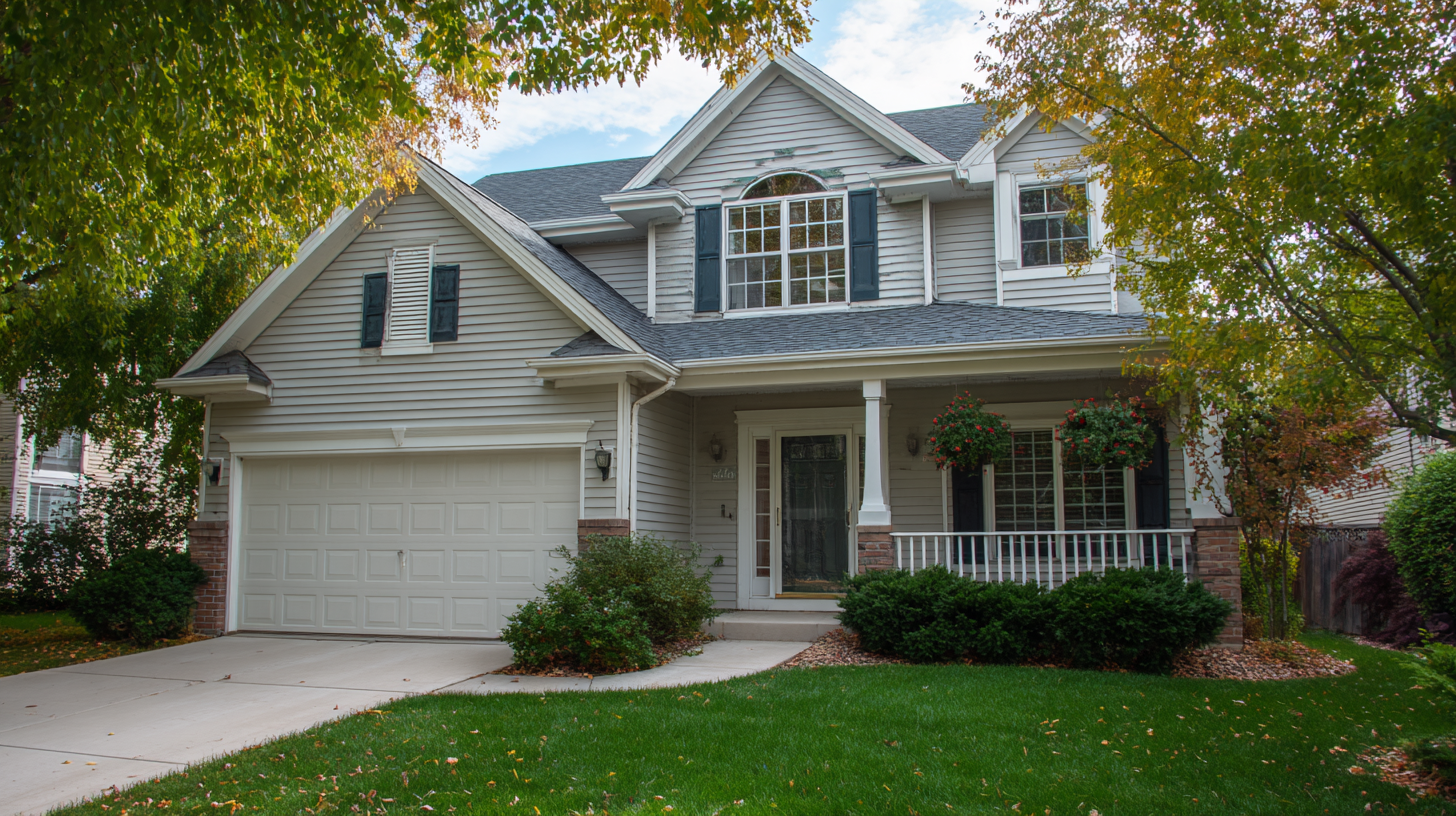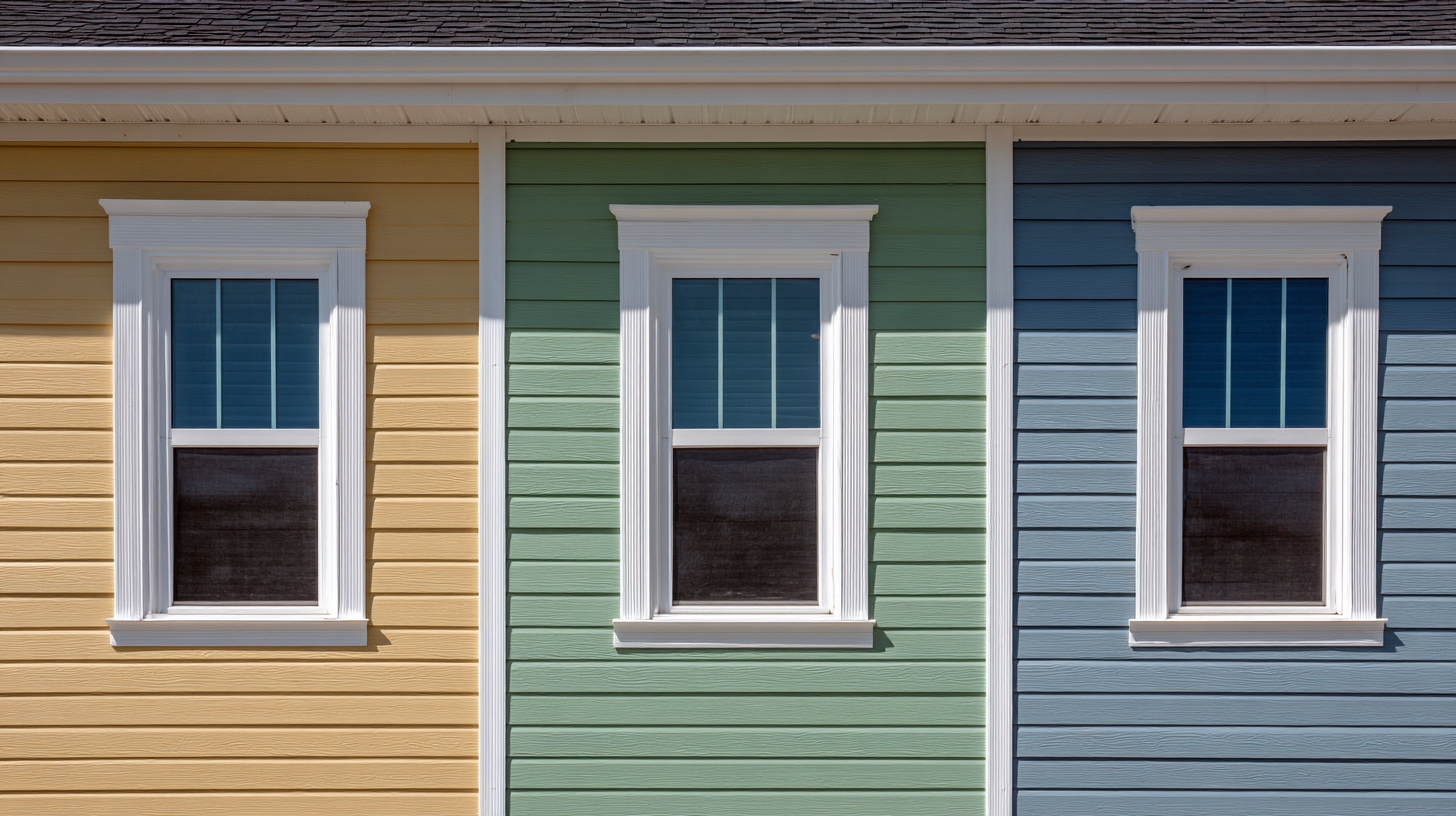The Ultimate Guide to Choosing Insulated Vinyl Siding for Your Home Energy Efficiency
In the quest for enhanced energy efficiency in homes, homeowners are increasingly exploring the advantages of insulated vinyl siding. This innovative exterior solution not only elevates the aesthetic appeal of a house but also significantly contributes to reducing energy consumption.

Understanding Insulated Vinyl Siding: Key Features and Benefits
Insulated vinyl siding has become a popular choice for homeowners seeking to enhance energy efficiency. This type of siding combines traditional vinyl with a layer of insulation, providing a dual benefit of aesthetic appeal and improved thermal performance. One of the key features of insulated vinyl siding is its ability to maintain a consistent indoor temperature by reducing heat loss in winter and keeping homes cooler in summer. Additionally, it aids in minimizing energy bills, making it a wise long-term investment.
When selecting insulated vinyl siding, consider the R-value, which measures the material's resistance to heat flow. A higher R-value indicates better insulation and energy efficiency. Another important feature is the siding’s thickness; thicker panels generally provide better insulation.
Tips: Look for siding options that come with a warranty to ensure durability. Additionally, choosing lighter colors can reflect sunlight, contributing to lower cooling costs during hot months. Finally, don’t forget to check for installation professionals with experience in insulated siding, as proper installation significantly impacts performance.
Evaluating Energy Efficiency Ratings for Insulated Vinyl Siding
When selecting insulated vinyl siding, understanding energy efficiency ratings is crucial for making an informed choice that can significantly enhance your home's performance. According to the U.S. Department of Energy, insulated vinyl siding can reduce energy consumption by up to 20% when properly installed. Look for products with high R-values; for instance, options with R-values between 3 and 7 provide substantial insulation benefits, leading to lower heating and cooling costs.
Tips for choosing the right insulated vinyl siding include checking for certifications such as the National Fenestration Rating Council (NFRC) labels. These certifications help identify products that meet or exceed energy efficiency standards. Additionally, consider the thickness of the insulation; typically, thicker insulation correlates with better energy performance. A study by the Vinyl Siding Institute found that homes with insulated siding had improved energy performance, contributing to better overall home comfort and energy savings.
Another key factor to evaluate is the siding’s performance in various weather conditions. Choosing a product evaluated in your local climate can yield better results. For example, insulated vinyl siding with an impact resistance rating of at least Class 2 can better withstand severe weather, further protecting your home while enhancing energy efficiency.
The Energy Efficiency of Insulated Vinyl Siding
Choosing the Right Thickness and Material for Your Home
When selecting insulated vinyl siding for your home, the thickness of the material plays a crucial role in its energy efficiency. Generally, thicker siding offers better insulation, reducing heat loss during colder months and keeping your home cooler in the summer. It's essential to look for siding with a minimum thickness of 0.040 inches, as this provides a solid barrier against the elements. Additionally, consider the insulation value, typically represented by R-value, which indicates the material's resistance to heat flow. Higher R-values translate to increased energy savings over time.

Material choice also impacts the overall performance of insulated vinyl siding. While traditional vinyl siding is lightweight and cost-effective, insulated vinyl combines the benefits of both standard vinyl and added thermal insulation. This integration not only improves energy efficiency but also enhances the durability and appearance of your home. When selecting the right material, opt for well-engineered products that feature reinforced structures and UV protection to ensure long-lasting performance and reduced fading. By focusing on both thickness and material quality, homeowners can significantly enhance their home's energy efficiency while enjoying a stylish exterior.
Cost Considerations: Budgeting for Insulated Vinyl Siding Installation
When considering insulated vinyl siding for your home, understanding the cost implications is essential. According to the Vinyl Siding Institute, homeowners can expect to pay between $3 to $7 per square foot for insulated vinyl siding, including installation. This upfront investment can yield substantial energy savings in the long run. In fact, the Department of Energy reports that insulated siding can help reduce heating and cooling costs by up to 20%, depending on the home's location and climate.
Additionally, budgeting for insulated vinyl siding isn't just about the initial costs; it's vital to consider long-term benefits. Properly installed insulated siding not only enhances your home's energy efficiency but also contributes to increased comfort and potential resale value. According to Remodeling Magazine's Cost vs. Value report, homeowners recoup approximately 75-80% of their insulated vinyl siding costs upon selling their home. For those on a tighter budget, looking for incentives or rebates offered by local energy efficiency programs can further reduce the financial burden, making insulated vinyl siding an attractive option for improving home energy efficiency.
Maintenance Tips for Long-lasting Insulated Vinyl Siding Performance
 When considering insulated vinyl siding, maintenance is crucial to ensure long-lasting performance and optimal energy efficiency. Insulated vinyl siding offers a great advantage: it can significantly reduce heating costs by keeping warmth in during winter months. This type of siding is not only durable and visually appealing, but it also has a lifespan that can exceed 50 years with minimal upkeep. According to industry reports, the demand for vinyl siding continues to grow, especially in remodeling projects due to its cost-effectiveness and energy-saving capabilities.
When considering insulated vinyl siding, maintenance is crucial to ensure long-lasting performance and optimal energy efficiency. Insulated vinyl siding offers a great advantage: it can significantly reduce heating costs by keeping warmth in during winter months. This type of siding is not only durable and visually appealing, but it also has a lifespan that can exceed 50 years with minimal upkeep. According to industry reports, the demand for vinyl siding continues to grow, especially in remodeling projects due to its cost-effectiveness and energy-saving capabilities.
Maintenance Tips: To maintain your insulated vinyl siding, regular cleaning is essential. Use a mixture of soap and water to wash away dirt and debris—this simple step can prevent mold and mildew buildup. Inspect the siding periodically for any signs of damage or fading. If you notice any issues, a timely repair can help avoid more significant problems down the line. Additionally, be wary of using high-pressure washers, as they might damage the material's surface, leading to costly repairs.
Another tip for enhancing your siding's longevity is to check the caulk and seals around windows and doors regularly. Ensuring these areas are well-sealed helps to maintain the overall energy efficiency of your home. With proper care and attention, your insulated vinyl siding will continue to perform effectively, keeping your home comfortable and cost-efficient for years.




